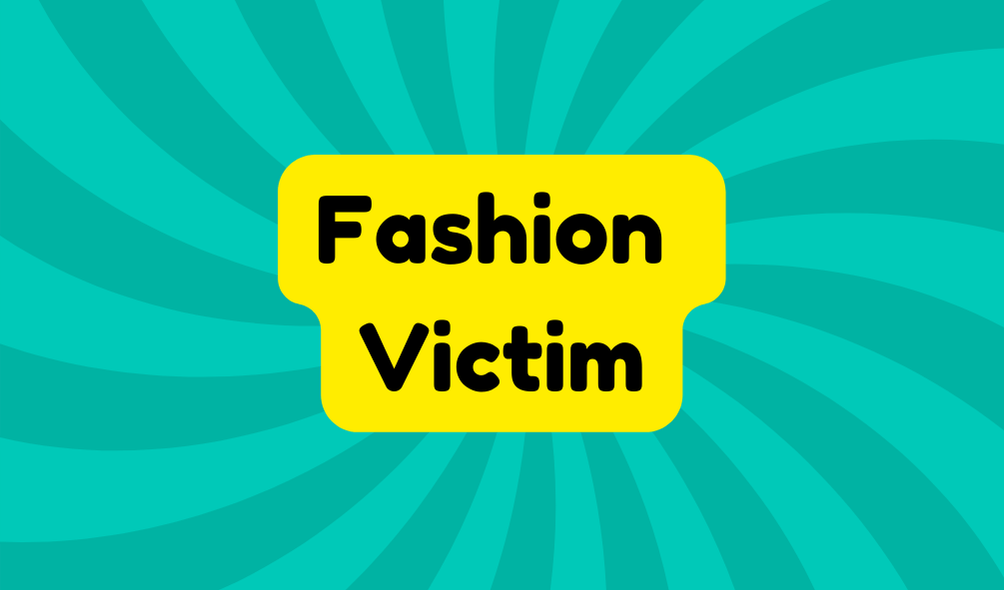A fashion victim is someone who follows fleeting trends without considering personal style. They often prioritize brand names and popular looks over authenticity, resulting in a superficial identity. This behavior can lead to discomfort, particularly if trends clash with individual body types. The rise of social media and fast fashion has intensified this issue, trapping individuals in a constant cycle of consumption. Understanding this phenomenon can provide valuable insights into the conflict between conformity and self-expression.
Synonyms
In the domain of fashion, the term "fashion victim" finds various synonymous expressions that capture its essence. Often, individuals who prioritize style over substance become known as trend chasers, lacking personal identity in their ensemble choices. Their fashion sense falls prey to fleeting trends, highlighting a misplaced dedication to appearance. Common synonyms include:
- Style Slave: Indicating a submission to trend dictates.
- Trend Follower: Suggesting a compliance with popular styles without personal insight.
- Status Symbol Enthusiast: Reflecting a reliance on brands rather than authentic self-expression.
Such titles serve as a critique of blind adherence to superficial fashion.
Example of Sentences
Fashion, often celebrated for its creativity and self-expression, can also ensnare individuals in a web of conformity known as becoming a "fashion victim." This term encapsulates those who relentlessly chase trends, forsaking their unique style in the process. Such individuals frequently find themselves committing fashion faux pas by overlooking their personal flair. Examples include:
- Wearing the latest designer only to fit in, despite discomfort.
- Clinging to trends that don't complement their body type.
- Imitating celebrities blindly, losing all sense of style authenticity.
Ultimately, they risk losing the very essence that makes their fashion choices meaningful.
Origin
The phrase "fashion victim" has a history that intertwines with societal views on clothing and personal expression. Emerging prominently in the 1970s and 80s, it reflects a historical context where trends dictated identity. Initially cited in a 1932 article, the term highlights societal implications related to conformity versus individuality. Individuals labeled as fashion victims often exhibit a lack of personal style, emphasizing a critical view of societal norms. This phrase challenges the autonomy of self-expression, revealing how cultural pressures can overwhelm personal choices. Hence, its evolution serves as a commentary on the paradox of fashion as both art and enslavement.
Collocations
As societal pressures shape personal appearances, various collocations associated with "fashion victim" illustrate the complex relationship individuals have with trends. These phrases often highlight the challenges trend followers face amidst style overemphasis.
- Mindless consumption – Reflects the tendency to buy without thought.
- Superficial identity – Suggests that personal identity is defined by fashion choices.
- Trend obsession – Implies an unhealthy fixation on current styles.
Together, these collocations convey a critical view of how fashion can overshadow individuality, leading to conformity rather than true self-expression in an era driven by rapid change and fleeting trends.
How to Use in Everyday Language
When guiding conversations about clothing and style, individuals might encounter the term "fashion victim" to describe someone who excessively follows trends without considering their own tastes. This phrase can serve as a cautionary reminder about the dangers of trend following, highlighting the importance of authentic style choices. Individuals may use it in discussions to critique overzealous fashion followers who prioritize external validation over personal expression. Such usage encourages reflection on how societal pressures can influence one's wardrobe. By introducing this concept into everyday language, people can foster a dialogue about individuality, prompting others to embrace their unique style rather than succumbing to conformity.
Why Is It Still Relevant Today?
While discussions about personal style highlight individuality, the term "fashion victim" remains relevant in today's society, where the influence of social media and fast fashion has intensified. This phenomenon embodies the struggle between embracing fashion trends and maintaining true personal expression. Many individuals find themselves trapped in a cycle of constant consumption, choosing trends over authenticity. This can lead to conformity, overshadowing unique identities. As platforms glorify fleeting styles, the danger of becoming a fashion victim looms, serving as a cautionary reminder. Understanding this relevance encourages critical reflection on choices and the balance between creativity and societal pressures in fashion.







